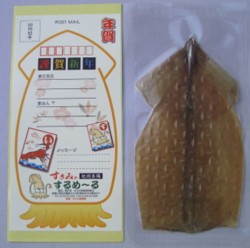 Residents of the coastal town of Susami in Wakayama prefecture love the sea and the post office so much that the town once installed a mailbox on the ocean floor for scuba divers. Now, further evidence of this powerful sea/mail love comes in the form of "Surumail" -- edible postcards made from squid.
Residents of the coastal town of Susami in Wakayama prefecture love the sea and the post office so much that the town once installed a mailbox on the ocean floor for scuba divers. Now, further evidence of this powerful sea/mail love comes in the form of "Surumail" -- edible postcards made from squid.
Produced by the Susami fishing cooperative, Surumail postcards consist of dried surume squid (Todarodes pacificus), the local seafood specialty. The squid jerky is flattened and vacuum-packed into the shape of a postcard, and an adhesive label is included for the postage, delivery address and a short message.
The fishing cooperative has sold between 4,000 and 5,000 cards each year since they went on sale in 2000. According to the Surumail website, which touts the postcards as a cutting-edge medium of communication for the 21st century, many big-name companies -- including Microsoft and IBM -- have inquired about the cards. Surumail may play an instrumental role in saving the Japanese economy, the website claims.
The postcards cost 320 yen (under $3) each and are available at the Susami post office and JR Susami station, as well as through the Susami fishing cooperative. You can also order the postcards online, but it is unclear whether they ship outside Japan.
It would be great to send one of these from Susami's underwater mailbox.
[Link: Surumail website]

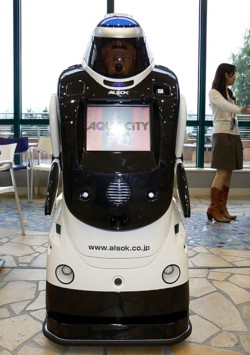 On November 27, Sohgo Security Services (
On November 27, Sohgo Security Services (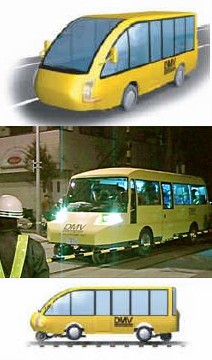 A dual-mode vehicle (DMV) that looks like a minibus and runs both on conventional railway tracks and paved roads was tested on the Gakunan railway in Fuji city (Shizuoka prefecture) on the night of November 24. The 28-passenger test vehicle was developed by the Hokkaido Railway Company (JR Hokkaido) in a
A dual-mode vehicle (DMV) that looks like a minibus and runs both on conventional railway tracks and paved roads was tested on the Gakunan railway in Fuji city (Shizuoka prefecture) on the night of November 24. The 28-passenger test vehicle was developed by the Hokkaido Railway Company (JR Hokkaido) in a 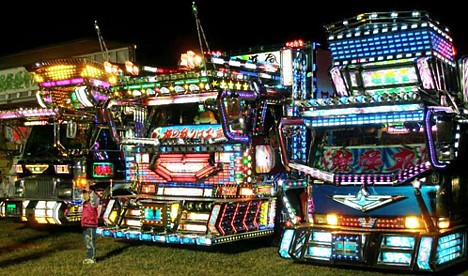
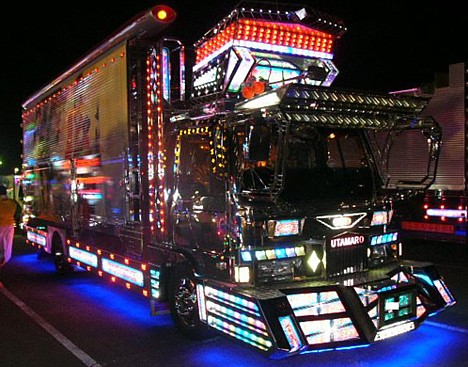
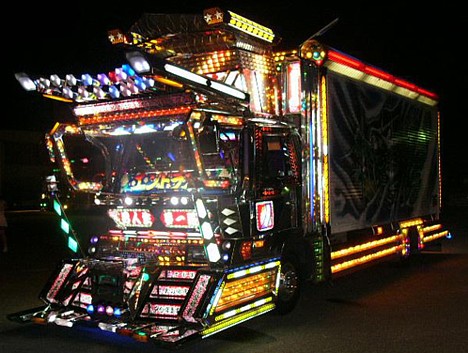
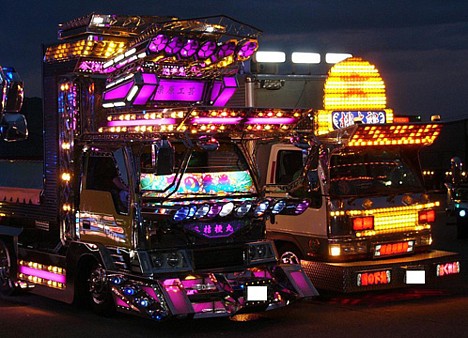
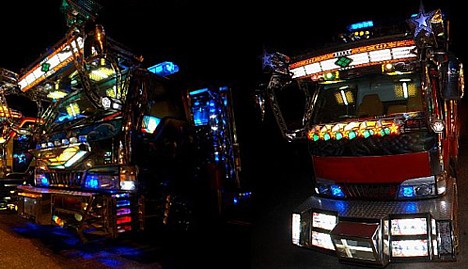
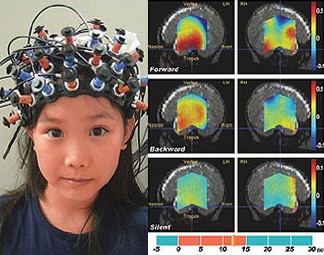 Hitachi has successfully tested a brain-machine interface that allows users to turn power switches on and off with their mind. Relying on
Hitachi has successfully tested a brain-machine interface that allows users to turn power switches on and off with their mind. Relying on 
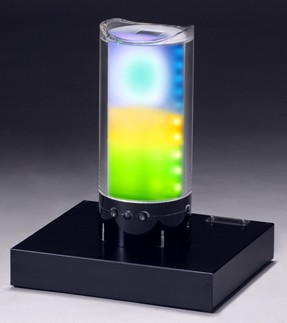 On November 6,
On November 6, 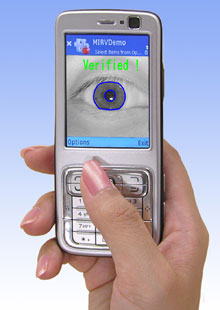 On November 6,
On November 6,